
Rigid, inflexible soles are a common inclusion in most conventional footwear. Most shoe manufacturers have taken the idea of foot sole protection and gone well beyond what is necessary or healthy for your foot. In most cases, only a thin layer of material between your foot and the ground is required for adequate foot protection. And people who have grown up in a barefoot culture may not require any sort of external foot protection.
Immobilization & Deformity
The biggest problem with rigid, inflexible soles is that they hold your foot in a compromised and deforming position, both during activity and at rest. Stiff soles, then, when combined with other problematic shoe design features—tapering toe boxes, toe spring, and heel elevation—effectively immobilize your foot in an abnormal configuration and prevent your foot structures from performing the way nature intended. Think of it this way: What other body parts do you immobilize for prolonged periods? Why would it be effective or advantageous to do this to your feet? When you wear shoes with rigid soles, it’s like putting your foot in a cast and expecting it to get stronger.
An Impediment to Mindful Movement
Stiff-soled shoes are also an impediment to mindful walking or running. With a stiff-soled shoe, there is no need to consider your foot placement, how your foot is striking the ground, and what effect this is having on your gait, posture, and musculoskeletal health (including joint health). Stiff, inflexible soles cause you to lose the tactile sensation of the ground—a true detriment to anyone interested in the full array of sensations possible when hiking or running.
Rigid vs. Flexible Soles
Rigid soles, though believed by many to be beneficial, may actually hinder your foot’s propulsive ability, contribute to immediate and long-term foot, ankle, and other musculoskeletal problems, and increase your likelihood of injury from poor foot placement. Search for shoes that can easily be folded in half (sole of the forefoot touching sole of the heel), preferably with just one hand. This folding ability is an indication of a flexible and foot-healthy sole. Also consider the degree to which you can twist the soles of your shoes. A shoe that's easily twistable is another excellent indicator of sole stiffness and appropriateness. You should be able to bend your shoe in multiple directions with minimal effort.

WANT TO IMPROVE YOUR FOOT HEALTH?
Let the team at Natural Footgear help you! Subscribe to our newsletter for the latest offers and helpful info, and sign up for our FREE email courses on various topics and foot health conditions.
Sign Up →
Want to Improve Your Foot Health?
We are here to help you every step of the way. Get our newsletter for the latest offers and helpful info, and sign up for our FREE email courses on various topics and conditions, including bunions, hammertoes, neuromas, plantar fasciosis, shin splints, ingrown toenails, and more.
Sign Up →
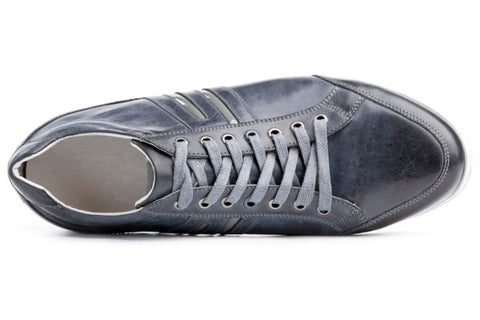 Toe box taper—the narrowing of a shoe from the ball of your foot to the ends of your toes—is one of the most harmful features of conventional footwear. It's difficult to find a pair of shoes or boots (or even sandals) that are wider at the ends of your toes than the ball of your foot. Most shoes and boots, including athletic models, force your toes into a wedge position...
Read more
Toe box taper—the narrowing of a shoe from the ball of your foot to the ends of your toes—is one of the most harmful features of conventional footwear. It's difficult to find a pair of shoes or boots (or even sandals) that are wider at the ends of your toes than the ball of your foot. Most shoes and boots, including athletic models, force your toes into a wedge position...
Read more



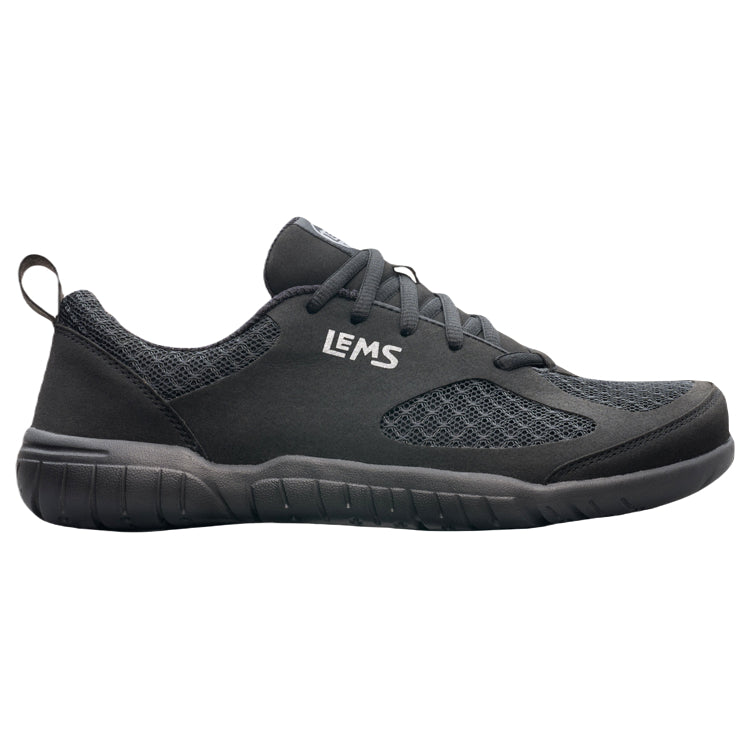
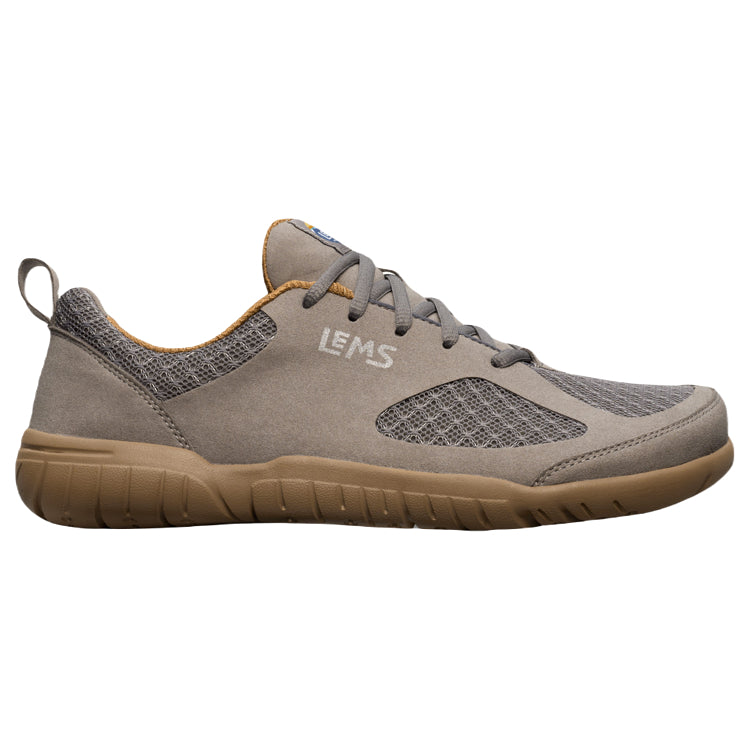
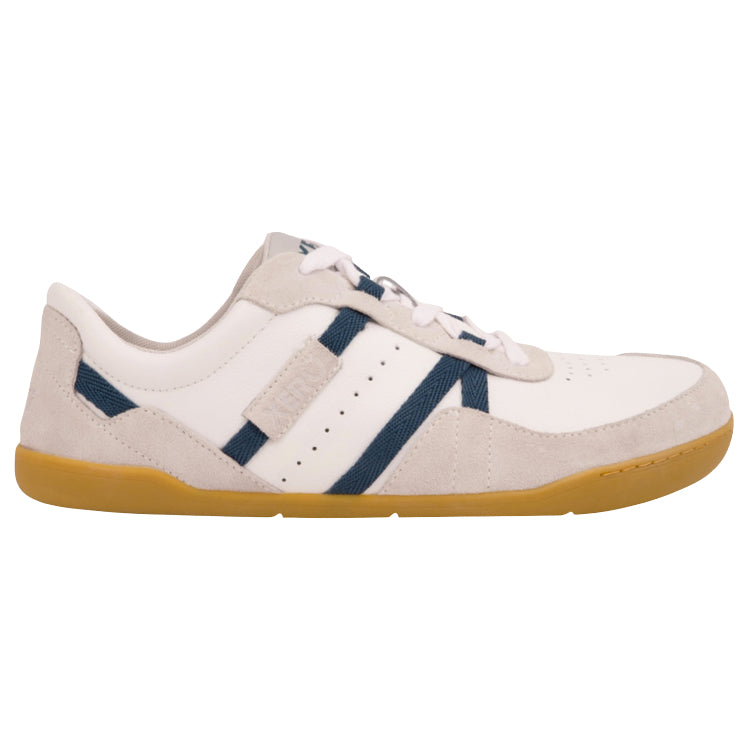


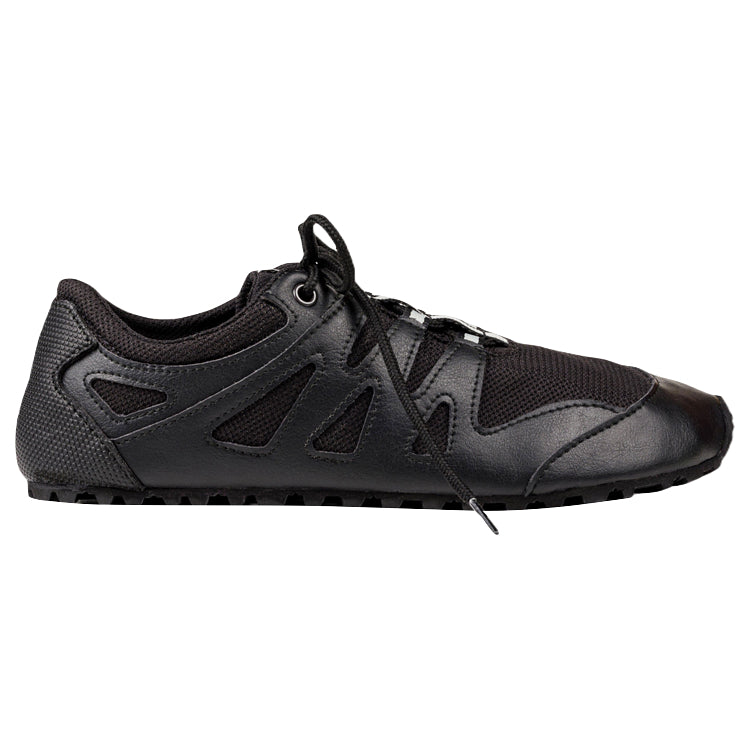
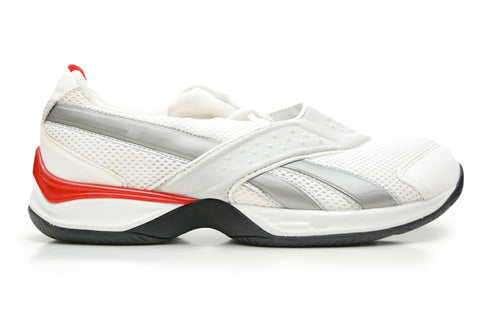


My understanding is that rigid soles are actually a good thing for people with a Morton’s neuroma because they keep the foot from flexing and pinching the nerve.
Hi, Dan,
Thank you for your comment. There are two principle forces that cause neuromas to develop in any part of the body, including the foot:
1. Pinch forces
2. Stretch forces
Wearing conventional footwear subjects the foot to both these forces via tapering toe boxes (pinch) and heel elevation and toe spring (stretch). So, the nerves in the ball of the foot are already vulnerable in conventional footwear, and then adding rigid soles into the mix increases the pressure on the nerves (and other sensitive ball of foot structures) that much more.
Here are some resources that you might find helpful if you want to dive deeper into the topic of neuromas:
Neuromas eCourse:
www.naturalfootgear.com/pages/do-you-have-foot-pain
Neuromas & Natural Foot Health:
www.naturalfootgear.com/blogs/education/17888880-neuromas-natural-foot-health
Neuromas: Conventional vs. Natural Approaches:
www.naturalfootgear.com/blogs/education/17888868-neuromas-conventional-vs-natural-approaches
I hope this info helps!
Kind regards,
Laura Trentman
I have been diagnosed with Capsulitis in my feet, and the podiatrist recommended getting shoes with inflexible soles, such as Kuru or FitFlop. Both caused extreme pain on top of the arch of my feet. Is there a better shoe that you can recommend?
Thank you for reaching out to us, Mark. We have found that, when it comes to capsulitis, wearing shoes with a completely flat sole from heel to toe and a sufficiently wide toe box to allow for natural toe splay will help take focal pressure off the ball of the foot and enable natural arch support. All the footwear we feature on the Natural Footgear site includes the above-mentioned design features and creates the kind of environment for the foot that helps heal the injured joint capsule. Of course, there are a number of other things you can do for capsulitis as well, and this article discusses all the various natural methods for addressing this common foot problem:
www.naturalfootgear.com/blogs/educational-articles/capsulitis
Please give this article a look and let us know if you have any other questions!
All the best,
Robyn Hughes, ND
I suffered from a metatarsal stress fracture due to running in Vibram FiveFingers shoes on concrete. I won’t deny this was a foolish decision, and I won’t condemn flexible shoes because of it. But I had a very difficult recovery and it appears the injury is returning. My foot doctor at UCLA insists I wear rigid-soled shoes and orthotics, which seems counterintuitive, but with this pain, I don’t want to take chances or argue. While I understand your goal here, can you offer some insight on this debate with regards to stress fractures? Do you have customers who have recovered from injuries by NOT adhering to the traditional stiff-soled shoe method? Thanks for your help!
Hi, Byrne,
Thank you for your message. To give you a little background on the subject: Prior to the Vibram FiveFingers lawsuit and the widespread introduction of minimalist running and walking shoes—many of which were not actually foot-healthy, by the way, due to the inclusion of tapering toe boxes—most podiatrists did not blame stress fractures on footwear; instead, they blamed them on overloading of the bone and called it a training error. So, too much, too soon. As soon as stress fractures were observed in minimalist, barefoot, or natural shoe wearers, many in the podiatric community immediately began blaming the shoes and ignoring the obvious training error that occurred as a result of the improper transition to the new footwear.
Now, there are a few interesting observations to note here, including the fact that lots of stress fractures occur in runners who run in stiff-soled shoes and orthotics. In fact, most stress fractures occur in this group, since those who run in minimalist or functional footwear are still a very small number overall. Also, there is no medical literature that shows that stiff-soled shoes and orthotics prevent stress fractures in runners. If stiff soles and orthotics actually helped prevent stress fractures in runners, we should never see runners who use stiff-soled footwear and orthotics develop a stress fracture! Yet, as already mentioned, this group of runners endures significantly more stress fractures than those who run in more natural footwear.
If a person has a stress fracture, he or she should undergo a period of immobilization to allow the affected bone to heal. In some cases, that might involve a cast, a cast boot walker, a postoperative shoe, or maybe an orthotic. But this phase of the recovery should never involve the use of the kind of stiff-soled running shoe that we are all too familiar with (you know, the ones with heel elevation, toe spring, toe box taper, etc.), as this type of shoe selectively overloads the metatarsophalangeal joints, which are an extremely common location for stress fractures to occur (especially the 2nd metatarsal).
So, I hope this answers your question. Please do let us know if you have any follow-up questions; we’re happy to help out however we can!
All the best,
Robyn Hughes, ND
Unfortunately, I must have a rigid sole for my one partial “drop foot.” That way, it will hold the foot up during the step so I do not trip. I’m having a terrible time finding hard soles that also include cushioning (the cushioning helps the drop foot, as it hits harder on the ground than with normal walkers).
Hi, wolfie,
Thank you for your comment. If we think of anything that might be appropriate for your needs, we will certainly let you know!
Kind regards,
Robyn Hughes, ND
I recently had a bunion removed, and the surgeon has recommended rigid-soled shoes. I also wear orthotics. Can you recommend a shoe for smart, casual workwear?
Greetings, Marge. Thank you for your comment and question. And thank you for sharing a bit about your foot health history. While it’s always important to follow the advice of your foot care professional, it’s also important to consider your long-term goals for foot health and function. In our experience, we’ve found that the best way to prevent a recurrence of the bunion and improve foot form and function over time—following the acute phase of your recovery—is to adopt a combination of helpful footgear, including Correct Toes toe spacers, Injinji toe socks, Pedag metatarsal pads, BlackBoard ToeBands, and foot-healthy footwear that allows your foot, including your big toe, to function the way nature intended. This combo helps ensure that your big toe remains in its proper alignment and contributes its fair share to moving you around.
The decision of whether or not to use conventional arch orthotics depends on a number of factors, and every set of feet is unique in terms of what’s required to ensure pain-free movement and function. If the orthotics are working well for you, then great! That being said, we have found that, in our experience, arch orthotics may be helpful for a period of time but that ultimately the pain, discomfort, or deformity returns and other strategies need to be adopted. Using the above-mentioned natural footgear can, in many cases, render conventional arch orthotics redundant, as it enables natural arch support and helps you build a stronger, more resilient foot with each and every footfall. Still, most of the footwear we feature on our site will accommodate an arch orthotic, though you’ll most likely need to remove the included (optional) insole or liner.
In terms of specific models that meet your criteria (i.e., a shoe for smart, casual workwear), you might consider the following:
Ahinsa Ananda Barefoot Ballet Flat
www.naturalfootgear.com/products/ahinsa-ananda-barefoot-ballet-flat-black
Ahinsa Ananda Barefoot
www.naturalfootgear.com/products/ahinsa-ananda-barefoot-black-1
Lems Chukka Canvas
www.naturalfootgear.com/products/lems-chukka-canvas-blackout-1
Lems Chillum
www.naturalfootgear.com/products/lems-chillum-blackjack-1
Xero Kelso
www.naturalfootgear.com/products/xero-kelso-black-1
All of these models look great and will support your feet by providing the kind of in-shoe environment that allows them to thrive.
We hope this info helps! If you have any follow-up questions, please don’t hesitate to post again here; we’re happy to help out however we can.
Yours in Foot Health,
Drs. Marty & Robyn Hughes
I suffered a calcaneus fracture 8 weeks ago. I was told at the orthopaedic and trauma clinic to not wear trainers etc. but to wear footwear with a ridged sole, like a walking boot.
Hi, Bernadette,
Thank you for your comment. I’m sorry to hear about your calcaneus fracture! Following your orthopedic team’s advice is key to healing properly. A ridged sole, like that of a walking boot, helps provide stability and reduce stress on the healing bone. When you’re ready, you might want to look into more flexible, supportive footwear that gradually restores your mobility. If you’re unsure about your recovery plan, it’s always a good idea to check in with your doctor about transitioning to foot-healthy footwear once you’re healed.
Kind regards,
Robyn Hughes, ND
I have bunions on both feet, very wide feet for a woman, and very low arches. The bunion on my left foot is minimal. The bunion on my right foot has bone build-up on the top of the joint in addition to bone protruding on the side (I severely jammed that toe many years ago). I also have arthritis in the bunion area on my right foot, but I can still bend the joint about 30 degrees. I recently purchased Correct Toes from Natural Footgear hoping to improve toe splay, flexibility, and foot health. I also just got my first pair of flat, soft-soled shoes with a toe box wide enough to fit my feet. For the last 11 years, I have worn stiff-soled shoes and graphite orthotics, per the recommendation of a podiatrist, but I think this has caused my feet to be less flexible. After learning about the benefits of soft-soled shoes, I’m hoping to improve my foot health or at least keep my feet from getting worse. In your opinion, is there a chance my foot health could improve by wearing flexible soles and Correct Toes? Or am I likely making it worse by moving away from stiff orthotics and stiff-soled shoes? Thanks for your thoughts.
Hi, Leslie,
Thank you for your comment. It sounds like you’re making positive changes for your foot health! Moving to flexible soles and using Correct Toes could very well improve your foot flexibility and alignment over time, especially since you’ve been wearing stiff-soled shoes and orthotics for so long. The key is gradual adaptation—your feet will likely need some time to adjust to the added mobility. If you feel any discomfort or strain, consider taking breaks or using additional cushioning inside your shoes until your feet strengthen. With patience, you should see some significant improvements!
Kind regards,
Robyn Hughes, ND
Hello. I’ve been diagnosed with capsulitis. I also wonder if I have Morton’s neuroma, as I seem to have pain/numbness across all areas (second, third, and fourth toe) of the ball of my foot. That said, I’ve been told to get shoes (like Hokas) with a rigid, rocker sole. But your blog seems to make sense that this will just be like wearing a cast on my foot and that I will ultimately lose the natural feel of using my whole foot while walking. However, my concern is that I do get pain in the ball of my foot after walking barefoot around my house, which I would think allows for natural toe splay, etc. I do get relief when I wear Oofos, which don’t provide a rigid sole, but they do provide cushioning and arch support. So, I am thinking a fully flat and flexible sole, which mimics walking barefoot, would also be painful—similar to walking barefoot. Can you please comment and offer your advice? Thank you.
Hi, Kathy,
Thank you for your comment. It sounds like you’re in a tough spot with your capsulitis and possible Morton’s neuroma. While rigid, rocker soles like those in Hokas are touted to reduce stress in certain areas, they can also limit the natural flex and feel of your foot, which causes its own set of problems. Given that you find relief with Oofos, you might consider experimenting with shoes that have a cushioned yet flexible sole and more room for toe splay. Certain models of Altra, Topo Athletic, and Lems footwear have relatively flexible soles and a comfortable footbed that still permits more natural foot movement. Consider trying a few different styles and see how they feel—your feet may prefer a mix of cushioning and flexibility rather than a completely rigid or flat sole. Of course, incorporating Correct Toes and other beneficial footgear—along with key foot exercises—into your foot care routine is an important part of a natural approach to both capsulitis and neuromas.
Here are some resources from our site that discusses natural approaches to both of these ball of foot problems in more detail:
Ball of Foot Pain: Conventional vs. Natural Approaches
www.naturalfootgear.com/blogs/educational-articles/ball-of-foot-pain-conventional-vs-natural-approaches
Neuromas: Conventional vs. Natural Approaches
www.naturalfootgear.com/blogs/educational-articles/neuromas-conventional-vs-natural-approaches
I hope this info helps, Kathy! Please let me know if you have any additional questions or comments.
Kind regards,
Robyn Hughes, ND
I have (slight) pain in my Achilles tendon. When I go hiking, is it best to wear shoes with stiff or flexible soles?
Hi, Herwig. Thank you for your question. In our personal experience, we have found that a more flexible sole is often the better choice for supporting natural foot function and overall lower leg health. Stiff-soled shoes can restrict natural foot movement and limit sensory feedback, which may lead to compensatory movement patterns that could place additional strain on your Achilles tendon over time. A flexible sole allows your foot to move more naturally, promoting proper biomechanics and encouraging your muscles, tendons, and joints to work as they were designed to. This can help distribute forces more evenly and potentially reduce stress on your Achilles.
That said, it’s also important to consider factors like your current level of foot strength, ankle mobility, and the terrain you’ll be hiking on. Transitioning to more flexible footwear should be done gradually, especially if you’ve been wearing stiff-soled shoes for a long time. Strengthening your feet and lower legs through exercises like eccentric calf raises, balance work, and foot mobility drills can also be beneficial. Additionally, incorporating gentle stretching and self-massage for your calves and Achilles tendon may help improve tissue resilience and reduce discomfort. If the discomfort persists or worsens, though, it’s always wise to check in with a trusted healthcare professional.
We hope this info helps! Please let us know if you have any follow-up questions.
Yours in Foot Health,
Drs. Marty & Robyn Hughes
I suffer from mild underpronation. My podiatrist says I need rigid shoes and no cushioning to correct it. I have arch support/heel cup orthotics to go inside. Do you have any recommendations or thoughts on this?
Hi, Danni. Thank you for reaching out and for sharing a bit about your situation. While we respect the perspective your podiatrist has offered, our approach to addressing underpronation—or any gait imbalance—differs from the conventional model of rigid shoes and orthotic dependence. At Natural Footgear, we view the foot not as a passive structure to be braced but as a dynamic, living system that can regain strength, mobility, and coordination when allowed to function naturally. Footwear that is flat, flexible, and widest at the ends of the toes encourages your foot’s intrinsic muscles, tendons, and ligaments to do the work they were designed to do, helping to restore more balanced movement from the ground up.
Instead of using rigid shoes and fixed arch supports to manage symptoms, we aim to help people cultivate long-term resilience and adaptability in their feet. For those with underpronation, this often means gradually transitioning to footwear that allows full sensory feedback and natural motion—paired with gentle strengthening, balance, and mobility work. We’d encourage you to explore our educational articles on foot rehabilitation and to consider flexible footwear options like Xero Shoes or Lems Shoes, which promote natural pronation mechanics without forcing the foot. Taking a gradual, informed approach gives your feet time to adapt and rebuild strength, ultimately supporting a more natural and sustainable gait pattern.
We hope this info helps! Please let us know if you have any follow-up questions.
Yours in Foot Health,
Drs. Marty & Robyn Hughes